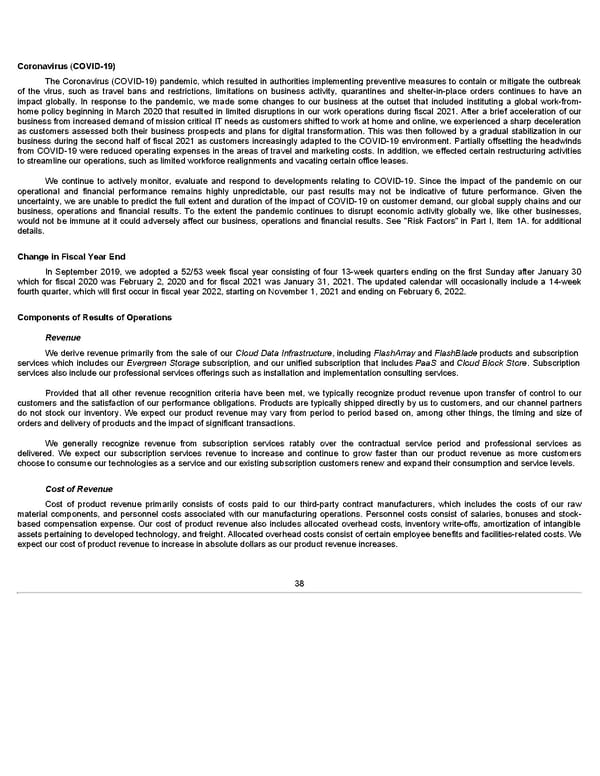Coronavirus (COVID-19) The Coronavirus (COVID-19) pandemic, which resulted in authorities implementing preventive measures to contain or mitigate the outbreak of the virus, such as travel bans and restrictions, limitations on business activity, quarantines and shelter-in-place orders continues to have an impact globally. In response to the pandemic, we made some changes to our business at the outset that included instituting a global work-from- home policy beginning in March 2020 that resulted in limited disruptions in our work operations during fiscal 2021. After a brief acceleration of our business from increased demand of mission critical IT needs as customers shifted to work at home and online, we experienced a sharp deceleration as customers assessed both their business prospects and plans for digital transformation. This was then followed by a gradual stabilization in our business during the second half of fiscal 2021 as customers increasingly adapted to the COVID-19 environment. Partially offsetting the headwinds from COVID-19 were reduced operating expenses in the areas of travel and marketing costs. In addition, we effected certain restructuring activities to streamline our operations, such as limited workforce realignments and vacating certain office leases. We continue to actively monitor, evaluate and respond to developments relating to COVID-19. Since the impact of the pandemic on our operational and financial performance remains highly unpredictable, our past results may not be indicative of future performance. Given the uncertainty, we are unable to predict the full extent and duration of the impact of COVID-19 on customer demand, our global supply chains and our business, operations and financial results. To the extent the pandemic continues to disrupt economic activity globally we, like other businesses, would not be immune at it could adversely affect our business, operations and financial results. See "Risk Factors" in Part I, Item 1A. for additional details. Change in Fiscal Year End In September 2019, we adopted a 52/53 week fiscal year consisting of four 13-week quarters ending on the first Sunday after January 30 which for fiscal 2020 was February 2, 2020 and for fiscal 2021 was January 31, 2021. The updated calendar will occasionally include a 14-week fourth quarter, which will first occur in fiscal year 2022, starting on November 1, 2021 and ending on February 6, 2022. Components of Results of Operations Revenue We derive revenue primarily from the sale of our Cloud Data Infrastructure, including FlashArray and FlashBlade products and subscription services which includes our Evergreen Storage subscription, and our unified subscription that includes PaaS and Cloud Block Store. Subscription services also include our professional services offerings such as installation and implementation consulting services. Provided that all other revenue recognition criteria have been met, we typically recognize product revenue upon transfer of control to our customers and the satisfaction of our performance obligations. Products are typically shipped directly by us to customers, and our channel partners do not stock our inventory. We expect our product revenue may vary from period to period based on, among other things, the timing and size of orders and delivery of products and the impact of significant transactions. We generally recognize revenue from subscription services ratably over the contractual service period and professional services as delivered. We expect our subscription services revenue to increase and continue to grow faster than our product revenue as more customers choose to consume our technologies as a service and our existing subscription customers renew and expand their consumption and service levels. Cost of Revenue Cost of product revenue primarily consists of costs paid to our third-party contract manufacturers, which includes the costs of our raw material components, and personnel costs associated with our manufacturing operations. Personnel costs consist of salaries, bonuses and stock- based compensation expense. Our cost of product revenue also includes allocated overhead costs, inventory write-offs, amortization of intangible assets pertaining to developed technology, and freight. Allocated overhead costs consist of certain employee benefits and facilities-related costs. We expect our cost of product revenue to increase in absolute dollars as our product revenue increases. 38
 Annua lReport Page 37 Page 39
Annua lReport Page 37 Page 39